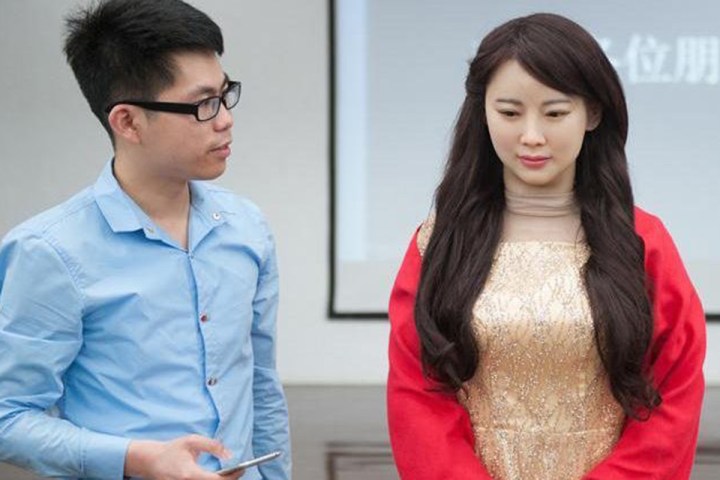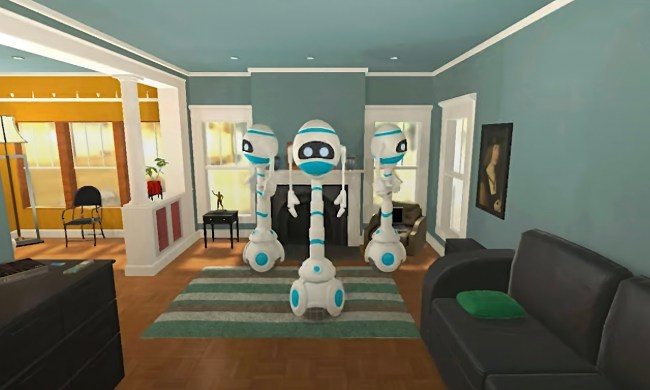
An ultra-realistic robot was unveiled last week by researchers from the University of Science and Technology in China (USTC). Jia Jia, as the female robot has been named, is apparently capable of basic communication, interaction with nearby people, and natural facial expressions. Unfortunately, many of her pre-programmed interactions appear to be highly stereotypical.
Related: See here for a vacuum cleaning robot
For example, if Jia Jia detects that someone is taking a photo of her, she’ll warn the photographer to stand back or else the picture will make her face “look fat.” Jia Jia can’t do much beyond that though. Essential human emotional responses like laughing and crying are not in the robot’s repertoire. Her hands have also been left lifeless. She does, however, speak super subserviently. The prompt, “Hello,” elicits the reply, “Yes my lord. What can I do for you?”
Related Offer: What can you build? Try your hand with robotic kits here
We’ve seen a few other ultra-realistic female robots recently. A few weeks ago a 42-year-old product and graphic designer from Hong Kong revealed “Mark 1,” a $50,000 female robot he built himself to resemble Scarlett Johansson. The project, which took a year and a half to complete, was supposedly the fulfillment of a childhood dream. Like Jia Jia, Mark 1 is capable of basic human-like interaction, command responses, and movement. Mark 1 actually outperforms Jia Jia in that the former can move its limbs, turn its head, bow, smirk, and wink.
And that’s just the most recent example. Last year researchers at the Intelligent Robotics Laboratory at Osaka University in Japan and Shanghai Shenqing Industry in China revealed Yangyang, a dynamic robot with an uncanny resemblance to Sarah Palin. Yangyang also seems to do more than Jia Jia with its abilities to hug and shake hands.
Related: Yangyang is an eerie female robot that can talk, smile, shake your hand, and hug you
The USTC researchers spent three years developing Jia Jia, an apparent labor of love. And they aren’t done yet. Team director Chen Xiaoping says he hopes to develop and refine their creation, equipping it with artificial intelligence through deep learning and the ability to recognize people’s facial expressions, according to Xinhua News. Chen hopes Jia Jia will become an intelligence “robot goddess.” He added that the prototype was “priceless” and would not yet consider mass production.


